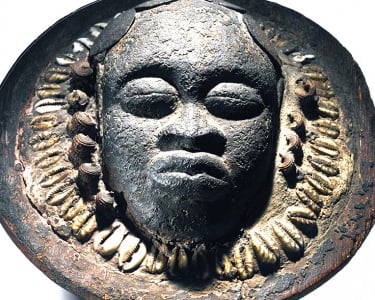The sculpture of Gu
The sculpture of Gu, a masterful creation by the Fon people of the Kingdom of Dahomey, represents a fascinating fusion of art, religion, and history. Gu, the god of war and iron, holds a prominent place in Fon mythology, embodying the dual forces of destruction and creation. This sculpture, typically forged from iron, reflects the deep significance of metal in Fon culture and the artistry of its blacksmiths.
AFRICAN HISTORY
deangichukie
6/17/20241 min read


The sculpture of Gu, a masterful creation by the Fon people of the Kingdom of Dahomey, represents a fascinating fusion of art, religion, and history. Gu, the god of war and iron, holds a prominent place in Fon mythology, embodying the dual forces of destruction and creation. This sculpture, typically forged from iron, reflects the deep significance of metal in Fon culture and the artistry of its blacksmiths.
Crafted in the 19th century, the sculpture of Gu is both a religious icon and a symbol of technological prowess. Ironworking was a revered craft among the Fon, and blacksmiths were held in high esteem. The creation of such a sculpture required not only technical skill but also a deep understanding of the cultural and spiritual narratives associated with Gu. The sculpture’s intricate details, from the formidable weaponry to the dynamic posture, convey the god's martial attributes and his role as a protector of the kingdom.
The aesthetic qualities of the sculpture are striking. Its form is both powerful and graceful, combining sharp, angular lines with smooth, flowing curves. This contrast highlights the dual nature of Gu as both a warrior and a craftsman. The iron medium itself is symbolic, representing strength, durability, and the transformative power of fire. These qualities were essential to the Fon people, both in their daily lives and in their spiritual practices.
In the context of Fon religion, the sculpture of Gu was believed to house the spirit of the god, serving as a conduit between the divine and the mortal realms. Devotees would offer sacrifices and prayers to Gu, seeking his protection and blessings, especially in times of conflict.
Today, the sculpture of Gu stands as a testament to the rich cultural heritage of the Fon people and the enduring legacy of their craftsmanship. It offers invaluable insights into the ways in which art, spirituality, and daily life were interwoven in the Kingdom of Dahomey. Exhibited in museums around the world, these sculptures continue to captivate and educate, highlighting the profound artistry and cultural depth of West African societies.
